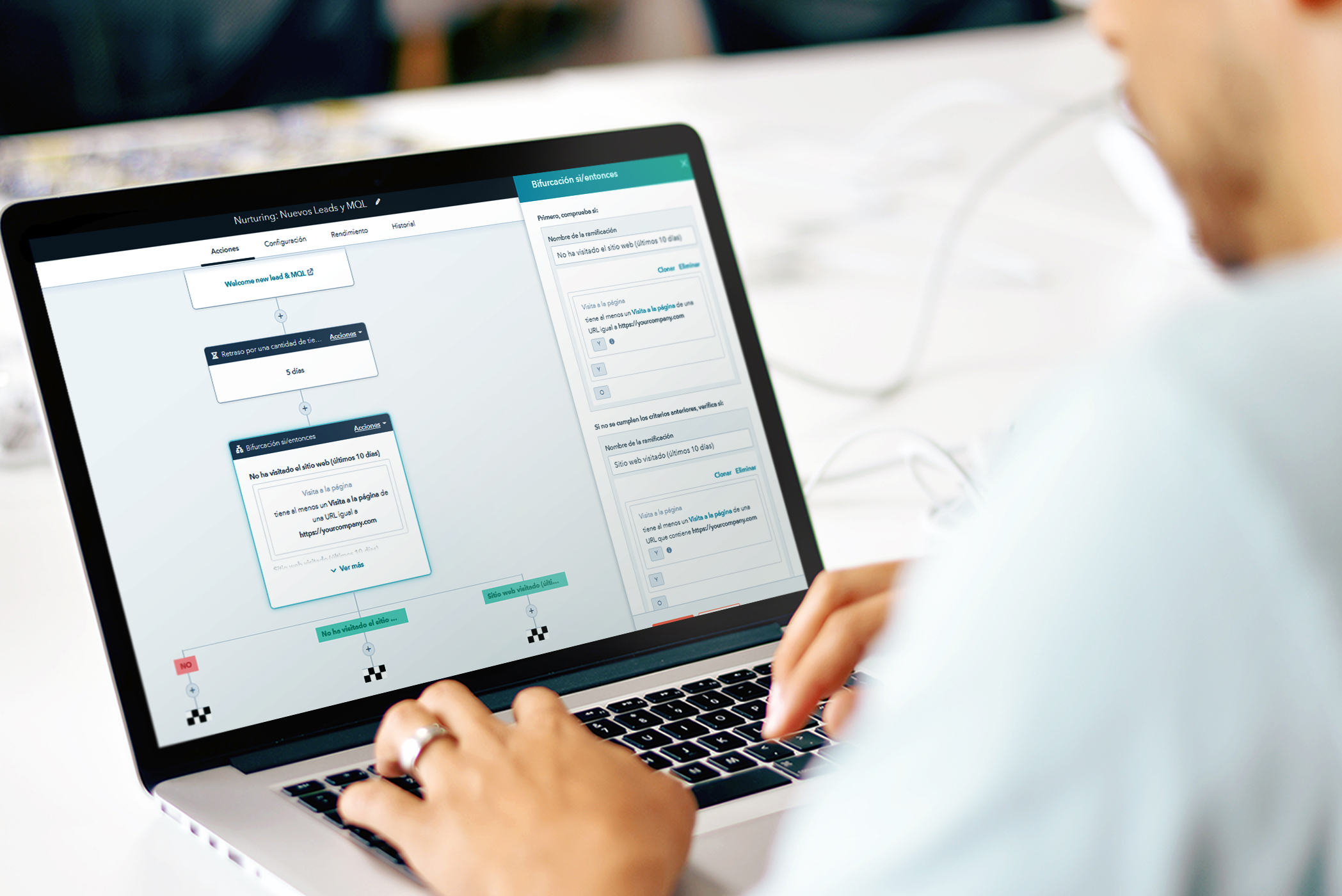
Did you know that Marketing Automation could lead to a 14.5% increase in Sales productivity?
As a marketing manager, you have the responsibility to take strategic decisions for your business, but short-term tasks still need to be done to keep up the good work, and let’s be honest… sometimes you feel that there are not enough hours within the day to have everything updated and on-time.
We are all aware of the difficulty to have everything under control, especially the small and repetitive tasks that can consume a lot of your time, resources, and energy and that can be very exhausting if done manually.
Don’t worry! Here is where automation with Hubspot Workflows comes to your rescue to take this weight off your shoulders.
In this post, we´ll share how to automate some strategic working processes of your business using HubSpot workflows.
What is a workflow and how to implement it?
A workflow is a sequence of automated reactions that are triggered when a specific action takes place. The goal is to automate repetitive tasks to help you scale up with your activities in a more efficient, productive, and consistent way.
How does it work?
Very easy, the workflow is automatically triggered by a specific action or a “starting condition”, in other words: “if this happens… then this will be the action that will follow”.
When can I use them?
Workflows can be used for:
- Creating lead nurturing email programs/sequences
- Adding property values to contacts, leads, and customers
- Assigning internal tasks
- Creating and following up Deals
- Creating & triggering internal notifications
- Updating your database
Now let’s see 3 essentials you must know about Automation processes with HubSpot
Email Marketing Automation
Email marketing automation will not only help you in your lead nurturing campaigns, converting leads into customers, but it can also be very useful when addressing it to existing customers in your database. You can encourage them to extend their relationship with your business and products, upsells, cross-sell and evangelize/retain.
This kind of automation will help you gain some extra time for other more strategic tasks by eliminating small and time-consuming ones, such as; creating email contacts lists, sending generic messages, or scheduling events manually.
How do I automate email workflows?
- Identify who you are sending to:
Depending on your campaign type you’ll want to address a particular email to specific contacts from your database. E.g.: for an upselling campaign you might want to address only the customers that have already purchased one of your products in the past.
- Define a clear goal:
What is the purpose of your email? Do you want to sell something? Promote? Inform? Think about what is going to happen once you achieve the action you wanted.
- Set up un enrollment criteria:
The “enrollment criteria” is a condition that is met for a contact to enter into a workflow process. In other words, it’s the trigger that enables your email to be sent. E.g.: An email can be sent to a contact that: submitted a form on your website, clicks one of your ads, or becomes an MQL.
- Identify the actions that must be taken:
Here you’ll need to figure out what kind of sequences of events according to the actions of your contacts must be taken, it can be: Emails, reminders, time delays, updates, etc.
- Set up your workflow:
You want to input some specific actions into the software such as:
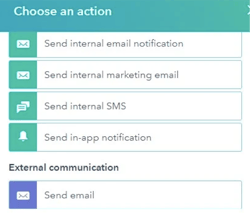
- Check your setup & Test it:
Here are some things to check before you go live:
- Look for errors within your contact lists
- Number of enrolled contacts your expectations
- Check the send setting
Lead Nurturing
You can use workflows to nurture your leads with relevant and quality content that will help you consolidate the relationship and move them down the conversion funnel.
This kind of workflow will be addressed only to those contacts that already engaged with your content and might be ready for a push to help them progress within their buyers' journey. You can apply this workflow to engaged leads by sending them emails containing middle of the funnel content that might upgrade them to MQL or SQL.
For example, let’s imagine that a lead just converted on a campaign you just launched by downloading an infographic. A workflow could be triggered in order to first send him a welcome email and then a week later another email can be sent to see if he would be interested in another piece of relevant content, such as an e-book about a similar topic.
You can easily add if/then branches to your workflow to send different content or actions depending on the previous action.
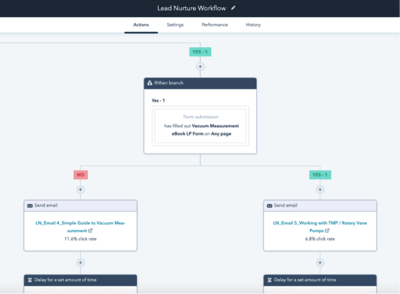
Internal Notifications
When a lead visits a page, downloads a document, or opens an email, your internal team can receive an internal notification, this will enable a quick follow-up.
Let’s see a few examples:
You can apply a workflow for automated emails, if for example, your marketing team has too many MQLs to keep track of, they might appreciate a few internal notifications reminders about their activity.
If for example, you are offering a discount or a free trial, your sales team needs to be updated about when the specific discount or free trial is going to end, they’ll probably also have to prepare possible future conversations with customers when the offer is expired. In this case, workflows are the ideal solution to send automatic internal notifications.
Internal notifications will basically help you automate both external (emails for lead nurturing) and internal processes. You can send these kinds of notifications either via email, text, in-app, or other messaging apps like Slack. Now that you’ve seen some of the processes that you can automate with workflows, let’s see how you can implement them in HubSpot.
How do I implement it in HubSpot?
Workflows are one of the strongest features in Hubspot. Follow these simple steps:
- Go to your HubSpot account and navigate to Automation > Workflows
- In the upper right click on “create workflow”
- Name the workflow and select the type
As you can see, you can start a workflow from scratch or use one of the proposed templates, there are many options available, such as: “Nurture conversions”, “Notify your Sales reps about a lead”, “send a notification when a meeting is scheduled” etc.
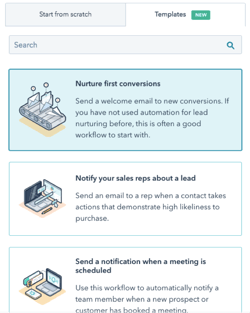
To start a new workflow from scratch:
- Click the Start from scratch tab. Then select Contact-based, Company-based, Deal-based, Ticket-based, Quote-based, or Custom object-based as the workflow type.
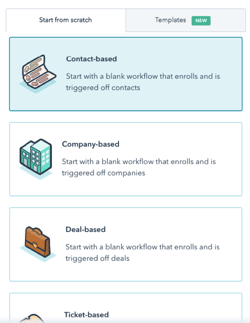
- Select the actions you’ll want to trigger
- Test your workflow
- Press on Turn ON
As you can see, workflows can be very helpful to automate strategic processes, if you’d like to know more about them and how to implement them in your strategy do not hesitate in contacting mbudo , we will be glad to help you!

Leo Fornasari
Leo is a graduated student on Business Management collaborating with mbudo on Inbound content and campaigns. He learns more about Inbound each day by gaining more HubSpot certifications. Leo is passionate about different cultures and he prides himself on his language skills, which are important for foreign business relations.
It may interest you
LATEST
BLOG POSTS
SUBSCRIBE TO MBUDO BLOG
And get your inbound news directly in
your inbox, once a month.

